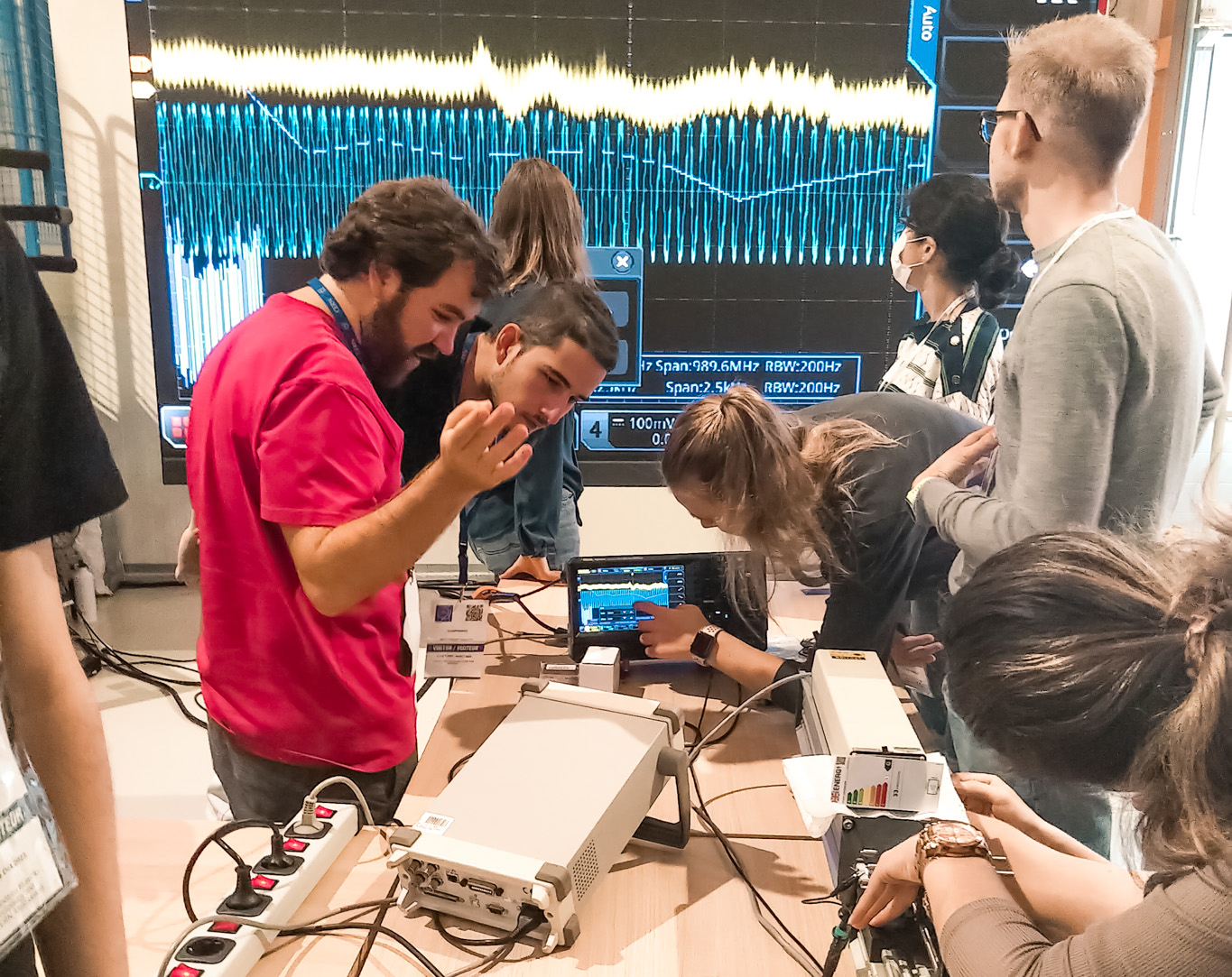Offering students hands-on skills in hardware and software around the domain of health at the 4th EPS TIG Hands-on Event for Science, Technology and Interfaces

Experiments necessitate many hard skills, such as physical understanding of the process, but also a bundle of other skills like know-how in instrumentation, hard- and software and strong teamwork capabilities.
It is to give these skills to students –classically difficult to obtain during studies– that the 4th European Physical Society Technology and Innovation Group's (TIG) Maker Event for Science, Technology and Interfaces was held at IdeaSquare.
The purpose of the event is to offer young physics and engineering students from European institutions new hands-on skills in hardware, software and related interfaces, around the domain of health.
Two experiments were proposed to work on interfacing employing devices that are modern, compact and affordable for a standard laboratory.
The first consisted of measuring the Doppler effect with light. The Doppler effect is the change in frequency of a wave when either is emitter or receiver are moving relative to each other. Measurements based on the Doppler effect are widely used in medicine, astronomy and radar. The students built a simple laser Doppler measurement and measured the speed of a moving target. The setup created by the students works with a red laser and splits the output light into reference and “measurement” paths, respectively. Interference between these is to be detected in order to measure the speed of the target object, a mirror moving on a translation stage. The students worked together on optics, opto-mechanics, detection-electronics, data recording, analysis and finally presentation of results and limits.
The second experiment consisted in building a compact superresolution sensor, in order to take a comprehensive peek into one of the basics of nano-science! The session began with a comprehensive introduction about the state of the art in nm-positioning explaining the experimental challenge for the students. An experimental setup including a simple but nm-precise piezo-actuator was created by the students. It is powered by simple electronics and its movements are monitored by an integrated strain gauge, a miniature Wheatstone bridge. In collaboration with HORIBA, a new optical sensor (OXYO, 2+1axes, nm-resolution), based on superresolution image treatment was assembled and operated in parallel.
Both experiments enlarged the participants’ hands-on skills in applying modern technologies and furthermore fostered communication skills when it comes to “complex” in-project synchronisation.



